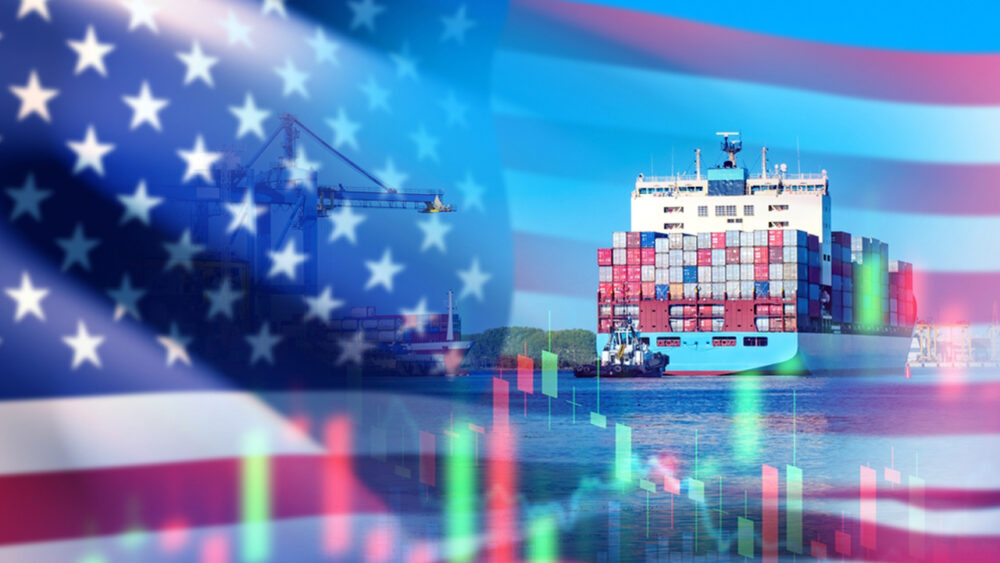Despite dire warnings from critics, the Trump administration’s aggressive tariff strategy continues to produce record-setting revenue without driving inflation higher—at least for now.
According to Treasury Department data and a July 28 economic statement, the federal government collected nearly $28 billion in customs duties in July 2025, setting a new monthly record. With collections already at $150 billion and projections as high as $300 billion by year’s end
Treasury: Tariffs Not Fueling Inflation
In a public report to the Treasury Borrowing Advisory Committee, the department noted that “tariffs have yet to have any noticeable negative effects on the aggregated price data,” pushing back on claims that import duties are accelerating inflation. In fact, inflation in the second quarter slowed to a 2.4% annual rate, down from 2.6% in the first quarter.
This finding undercuts months of speculation that tariffs—particularly those applied to Chinese goods and strategic imports from Brazil, Mexico, and Canada—would increase prices for American consumers.
Even media skeptics are beginning to acknowledge the unexpected outcome. On a recent episode of his Club Random podcast, longtime Trump critic Bill Maher admitted he had misjudged the impact of tariffs.
His comments reflect a growing realization that earlier economic forecasts may have underestimated the resilience of the post-pandemic economy under aggressive tariff policy.
“Most inflation readings were stable-to-lower in the second quarter,” Treasury officials stated, adding that “core goods prices increased just 0.1 percent on average per month,” matching prior quarters. Energy prices rose slightly, while food inflation continued to ease.
Political Windfall and Policy Leverage
President Trump and congressional allies have seized on the rising tariff revenue to propose rebate checks for American households, a move intended to neutralize political criticism and direct benefits to middle-class voters. One proposal from Sen. Josh Hawley would send $600 per person using funds collected from foreign importers.
With more than $150 billion collected so far this year and projections pointing toward $300 billion or more by year’s end, tariffs have become a central fiscal tool—one that doesn’t rely on traditional taxation.
Treasury officials noted the One Big Beautiful Act, passed July 4, contributed to stronger business investment and capital expenditures in Q2, suggesting that tariff revenue is being paired with supply-side incentives to encourage domestic productivity.
Labor Market Holds Steady
Despite modest concerns about hiring slowdowns, the U.S. labor market remains strong. Payrolls grew by an average of 150,000 jobs per month in Q2, and the unemployment rate ticked down to 4.1% in June. Prime-age labor force participation rose to 83.5%—above pre-pandemic highs.
While hiring has softened compared to the post-pandemic boom, layoff rates remain near historic lows. Treasury cited “a holding pattern” among employers that may break in Q3 as capital investment accelerates and policy uncertainty recedes.
Texas and the Metroplex: Real-World Impact
North Texas businesses are watching closely. Dallas–Fort Worth importers—especially in the automotive, tech, and manufacturing sectors—are contending with rising landed costs. While many have absorbed the added expense so far, the pressure to adjust pricing or retool supply chains is mounting.
Retailers may pass those costs along by Q4, particularly if foreign suppliers respond to extended tariff deadlines with price hikes of their own. However, with the broader inflation picture remaining relatively tame, consumers in the Metroplex have yet to see widespread sticker shock.
Looking Ahead
The Trump administration’s trade policy is beginning to redefine the role tariffs play in federal finance. Long seen as tools of protectionism, they are now being positioned as a viable replacement for more direct taxation—with none of the political friction.
Whether that strategy proves sustainable depends on how long the inflationary calm holds. But for now, the numbers speak for themselves: record revenue, stable prices, and a political weapon that may reshape the 2026 election landscape.


